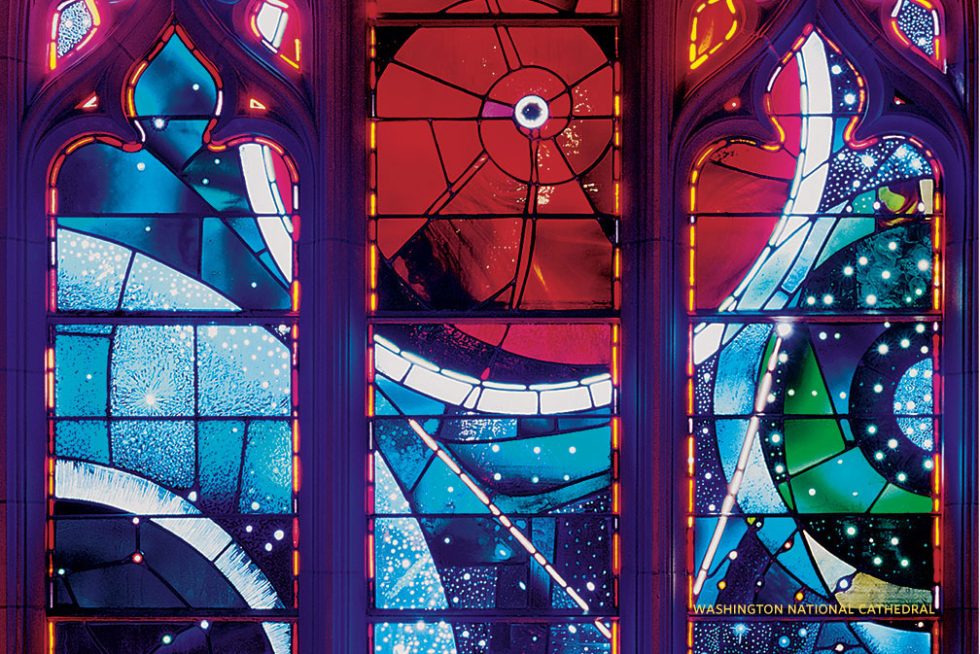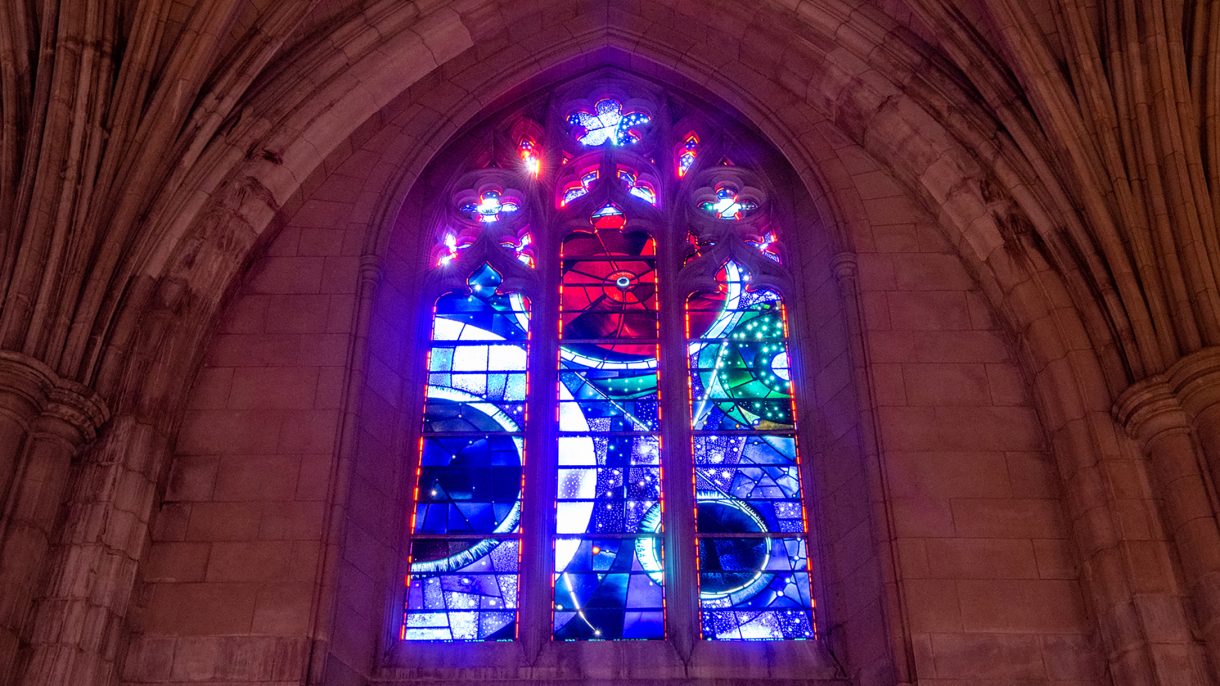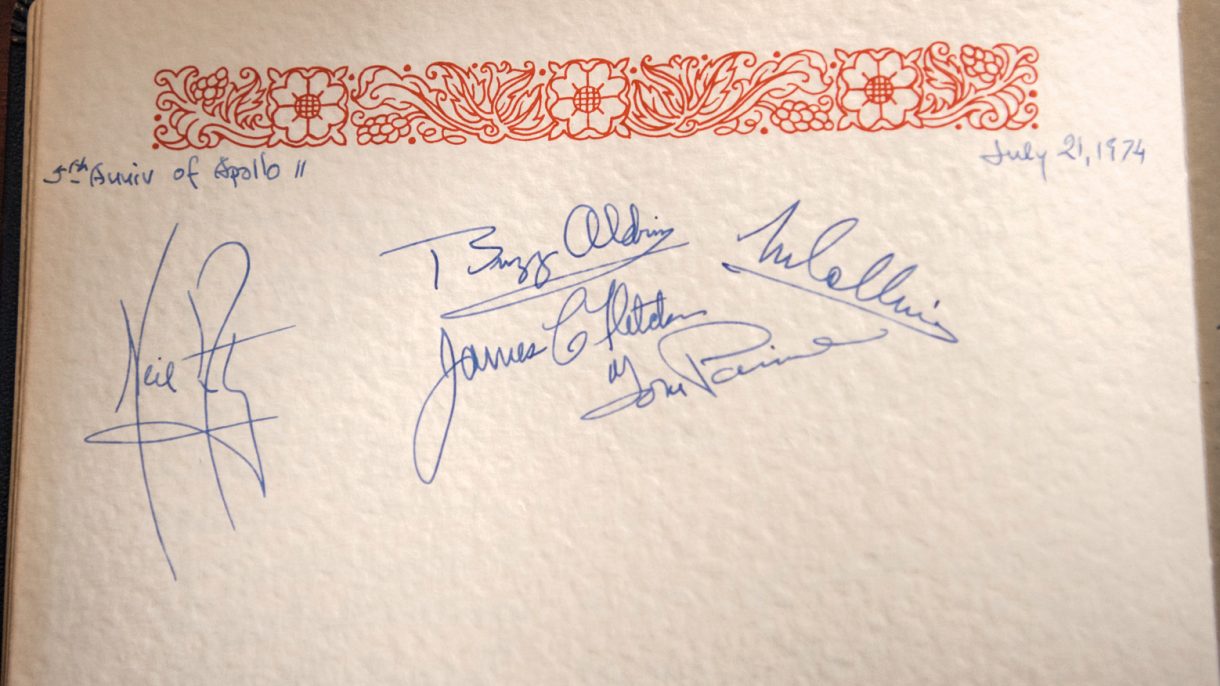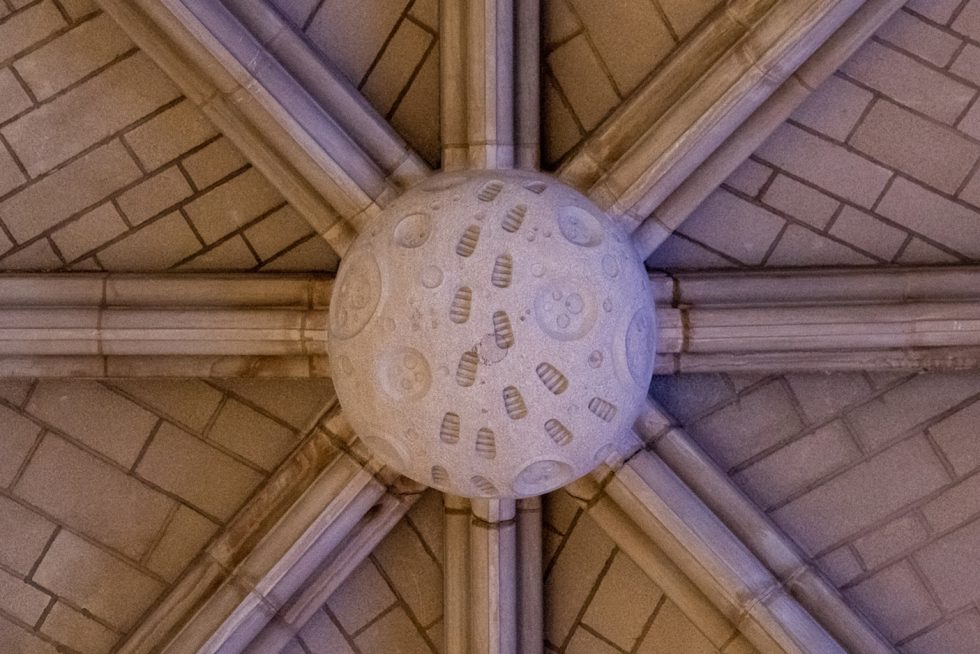
The Space Window
Take a deep dive into the history and artistry of the Cathedral's most famous stained glass window.
The Scientists and Technicians Window—better known as the Space Window—is perhaps the Cathedral’s best-known stained glass window. Located in the middle level of windows on the south side of the nave, the window is dominated by large circles and gives the impression of staring into the void of space.
Artist Rodney Winfield used NASA photographs as the inspiration for the starry field. While Winfield did not specify which circle represents the moon, the dotted line suggests the trajectory of the Apollo 11 spacecraft. At the bottom of the window an inscription quotes the biblical book of Job: “Is not God in the height of Heaven?”
Yes, the window contains a real moon rock!
In the center of the large red circle, a smaller circle contains a sliver of moon rock collected during the Apollo 11 mission. The moon rock was presented to the Cathedral by the Apollo 11 astronauts Michael Collins, Neil Armstrong and Edwin “Buzz” Aldrin, at the window’s dedication on the fifth anniversary of the first lunar landing, July 21, 1974.
In collaboration with then-Cathedral Dean Francis Sayre, the primary donor for the window was Thomas O. Paine, former Administrator of NASA.
Space Window Dedication: July 21, 1974
Travel back 50 years to when Apollo 11 astronauts Michael Collins, Neil Armstrong, and Buzz Aldrin presented the moon rock at the Space Window’s dedication.

Cathedral Age: Into The Deep
special feature







